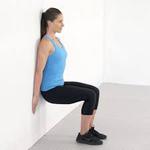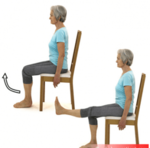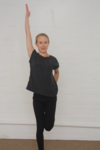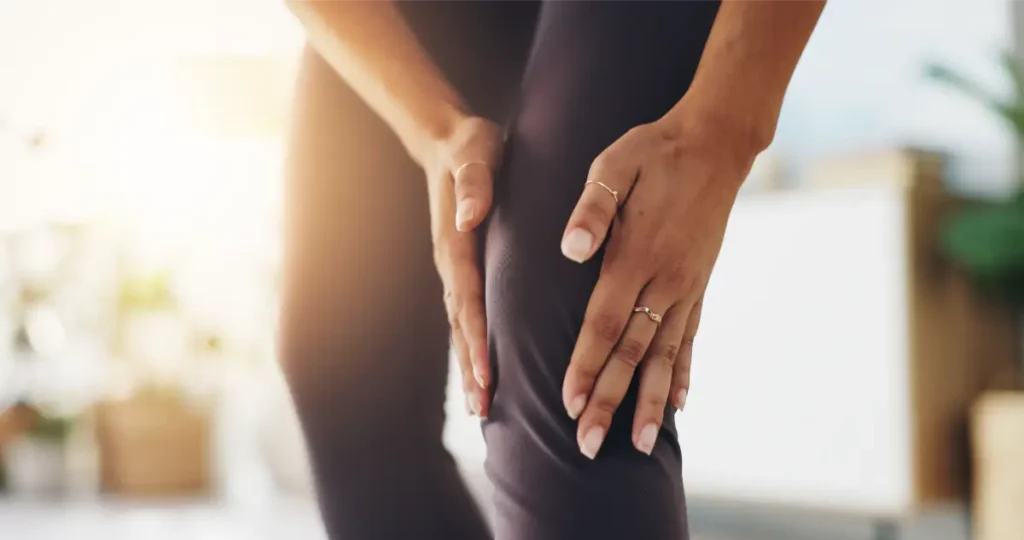If you’re suffering with knee pain it can be hard to ignore. Your knees take a lot of load day to day, especially if you have an active or standing job. Often your knees are the first area to hurt if you increase your exercise – running, lower body strength training and long walks on uneven ground can often trigger knee pain. .
Our knees transfer load from the pelvis to the ankles and feet. Knees can often take the strain and become painful as a result of problems or muscle imbalances at your hip or ankle. This can make identifying and treating the cause of the pain more complex than it may appear, as it is important to consider more than just the muscles and structures directly at the knee when forming a diagnosis and rehab plan.
In this blog I will summarise 3 common causes of knee pain and strategies to treat and prevent them.
1) ITB syndrome. ITB syndrome is common in runners and recreational athletes and gym goers. With ITB syndrome pain is usually on the outside of your knee, the pain comes on gradually and often after increasing your training or first starting. Often activities such as running, squatting and stairs can be painful.
The ITB or iliotibial band is a tight fascial band of connective tissue that runs from the outside of your hip to your knee. Its role is to flex, abduct and rotate the hip, and to stabilize the knee. Often weakness at the hip causes altered movement at the knee, placing the ITB on more of a stretch and causing friction of the ITB against the outside of the knee, which becomes painful with repeated training and knee movement.
2) Anterior Knee pain. This term is a little vague as it implies pain at the front of the knee. It is most often the result of muscular imbalances or weakness at the knee, which affect the movement of the patella (knee cap). Underlying factors such as genetic patella abnormalities, inward facing knees and increased foot pronation with running and walking can also contribute to the onset of this condition.
Anterior knee pain usually occurs with prolonged walking, stairs, squatting, driving, wearing high-heeled shoes, or with long periods of sitting. Some people find their knees feel weak or like they might give way when walking down stairs or uneven surfaces
3) Meniscal tears. There are two meniscus in the knee, formed of cartilage they cushion they act as a shock absorber in the knee joint and allow the femur, patella and tibia to move against each other without friction. The meniscus can tear as a result of injury or trauma to the knee, or from repeated ‘wear and tear’ due to use of the knee or aging.
Meniscus tears are common and many people have them without experiencing any pain at all. However they can cause knee pain depending on the size of the tear, the cause of it and factors such as the strength and flexibility of the muscles around the knee and hip. Meniscal tears can also cause clicking, locking or sticking within the knee, pain when sitting with the knee bent for long periods or when bending to squat or go down stairs.
So what can you do about it?
For most people all these types of knee pain can be improved with simple self-help and physiotherapy if pain persists or you need extra guidance.
To reduce knee pain:
- Reduce the time spent doing painful things – it may seem simple however I see many patients in clinic who push through pain and aggravate their injuries. If you have pain with running, workout how much running you can do until pain gets worse, and stick to that, or change to another less painful exercise such as cycling. If its painful to sit with your knees bent, have a foot stool or stand for periods to reduce the load.
- Increase your training or activity gradually – many people get knee pain when they increase their exercise or activity levels too soon too fast. As a general rule don’t increase your training load (time, weight, distance) by more than 10% per week. If you’ve been inactive for a while start gently, doing 50-70% of what you think you can do, then building up depending how you get on. This is as relevant for exercise training as it is for gardening or housework! Seek help from a personal trainer or physiotherapist if you need guidance or have persistent pre-existing knee pain or injuries.
- Vary your exercise training –if you only ever do one form of exercise muscle imbalances can and will occur. This is just as relevant if you do no exercise at all and spend a long time sitting. In addition only doing impact activities (running, jumping) places more load wear and tear on your knees than a varied exercise routine. For optimum knee strength and function aim to do strength, conditioning and flexibility exercise each week in addition to cardio, and make the cardio low impact (cycling, walking on soft surfaces, cross training) if impact causes pain.
- Do these exercises and stretches – for knee strengthening and lower limb flexibly try the following exercises. If you have knee pain only do what you can manage and stop doing or avoid exercises if pain occurs at over 50% of your tolerance levels. Aim to do them every other day and increase how many repetitions you can do as they get easier.
- Wall squat – stand with your back and hips against the wall, bend your knees and slide down ¼ to half way. You should feel tension in your thighs and not your knees – if knee pain starts don’t go so far. Hold for upto 30 seconds
- Single leg stand – stand on one leg, use the wall for support if needed, make sure your hips are level – hold upto 1 minute per leg.
- Leg raise – lie on your side, ensure you are not leaning forward or back. Bend your underneath leg for support. Lift and lower your top leg, keeping it straight as you can. Repeat 10-15 times.
- Knee extension – sit on a chair and slowly straighten your knee, at the top tense your thigh muscle and hold for upto 5 seconds then lower. Repeat 5-10 times, if the thigh squeeze is painful avoid that part.
- Hamstring stretch – lie on your back and place your hands or a towel around your thigh, keep your knee straight and pull your knee towards you to stretch the back of your leg. Hold for 20seconds each side.
- Quad stretch – stand on one leg, bend the other knee and flex the foot to your bottom, grab your ankle or sock or trouser and pull the foot to your bottom. Hold 20seconds each side.
I hope you found this useful, to book an appointment to ask me about your knee pain or any other injury email me info@clairegurneypilates.com







